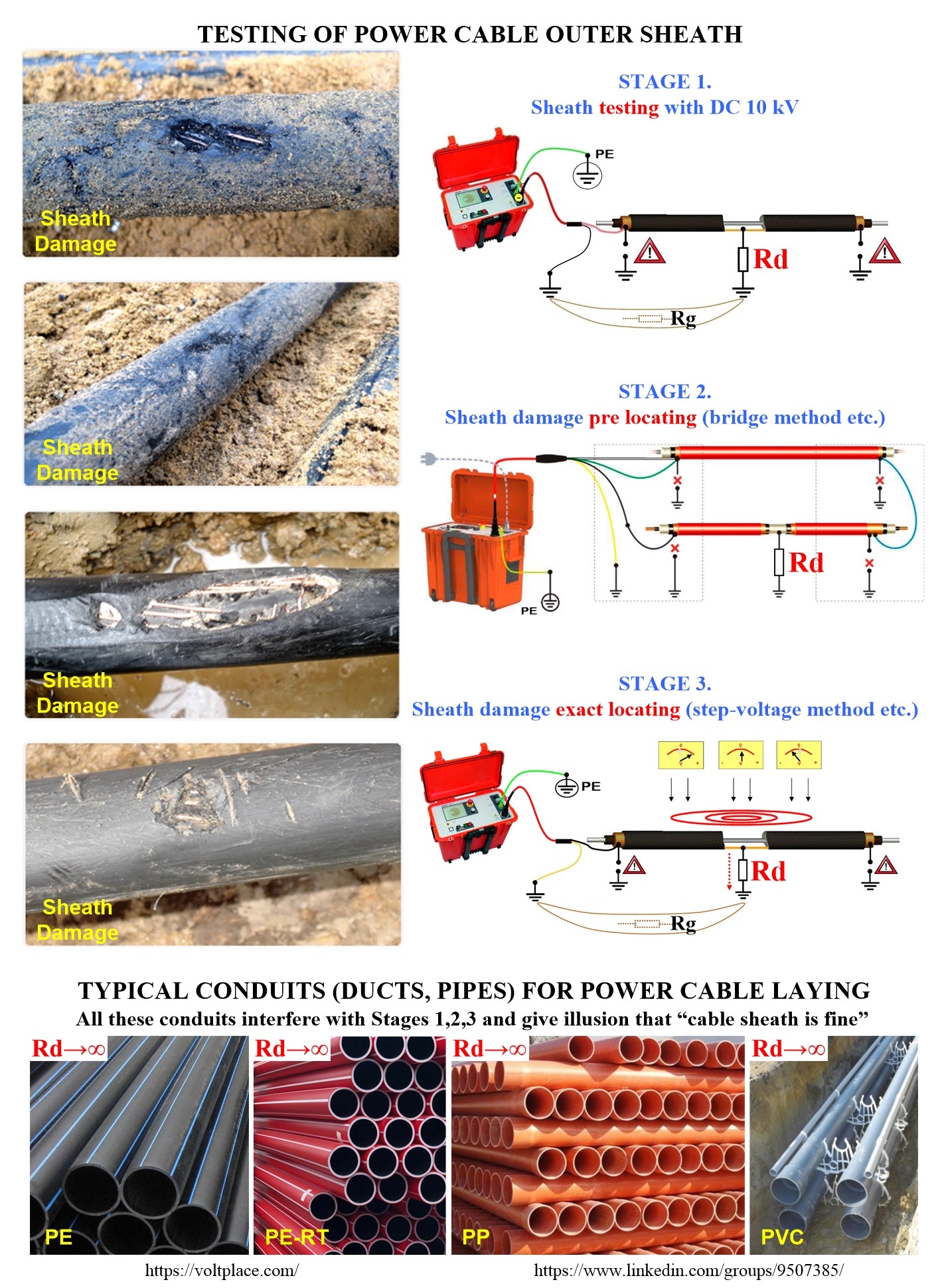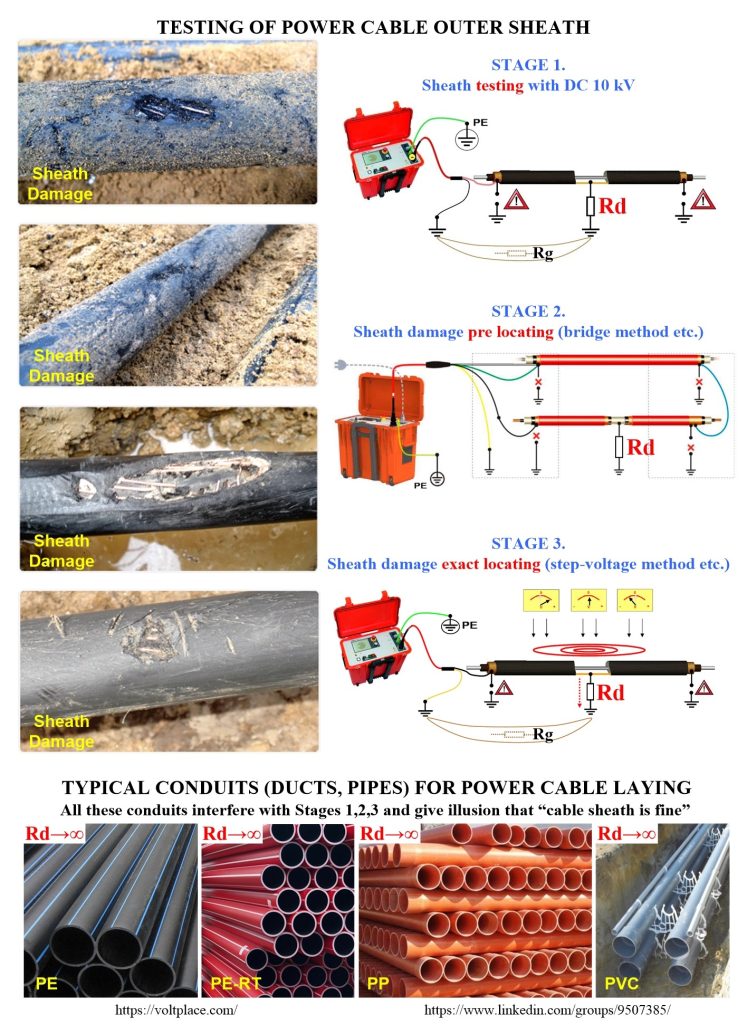
Cable ducts can hide issues
All over the world, more and more cable lines are laid not in the ground, but in ducts (conduits, pipes). Such ducts are made of various materials (PE, HDPE, PE-RT, PP, PVC), they can be single-layer or multi-layer. But all these ducts have one common problem – they have “infinite” impedance Rd of the side wall. It means they isolate the cable from the ground and thereby prevent:
1. Testing of the cable sheath.
2. Pre locating of the point of the sheath damage.
3. Exact locating of the point of the sheath damage.
Damage to the outer sheath is the most common type of cable damage and have serious consequences:
✅ Cable loses its tightness.
✅ Moisture is able to penetrate into the cable main XLPE insulation.
✅ After a certain time short-circuit will occur in the XLPE insulation.

It is very important to monitor the condition of the cable outer sheath, preventing the commissioning of cables with a damaged sheath. However, how can we monitor the condition of the sheath if the duct isolates the cable from the ground and interferes with the operation of the testing/locating devices at Stages 1,2,3?
One solution is to use cables with a special sheath that has a semi-conductive layer. However:
✅Layer increases the cable cost by 1-3%, and it is usually used only on very important lines (some cable lines of 110 kV and above).
✅Layer is cut off during the installation of cable terminations and cable joints, which reduces the effect of its use (because layer is terminated several times along the cable route).
✅Layer can only help at Stage 1 (testing), but does not solve problems at Stages 2 and 3, where it is important that the locating current exits into the ground at the point of sheath damage, and not somewhere else, where it reached along the layer.
Thus, at present, the problems of Stages 1-2-3 (testing/locating) remain unresolved anywhere in the world. This is terrible, because it turns out that the ducts help hide from us the numerous damages to the cable sheath.
If the cable line in the duct has successfully passed the sheath tests, this does not mean at all that the cable sheath is really intact, and there is no risk of moisture penetration into the XLPE insulation of the cable.
The more we use ducts (conduits, pipes) to lay cables, the more we trap ourselves. If we want to lay cables in ducts, then first we must learn how to solve the problems that arise in Stages 1-2-3. Moreover, we must learn how to solve them not only for expensive and responsible 110-500 kV cable lines, but also for medium voltage 6-35 kV cable lines.
The duct hides the cable from us. The duct hides the true sheath condition from us. Such a game of hide-and-seek with duct can be very expensive, because the cost of 1 km of the built cable line in some cases can reach 1 million euros or more.
If we have buried millions of euros in the ground, then we must know everything about these money and ensure their safety! But the duct is in the way!
